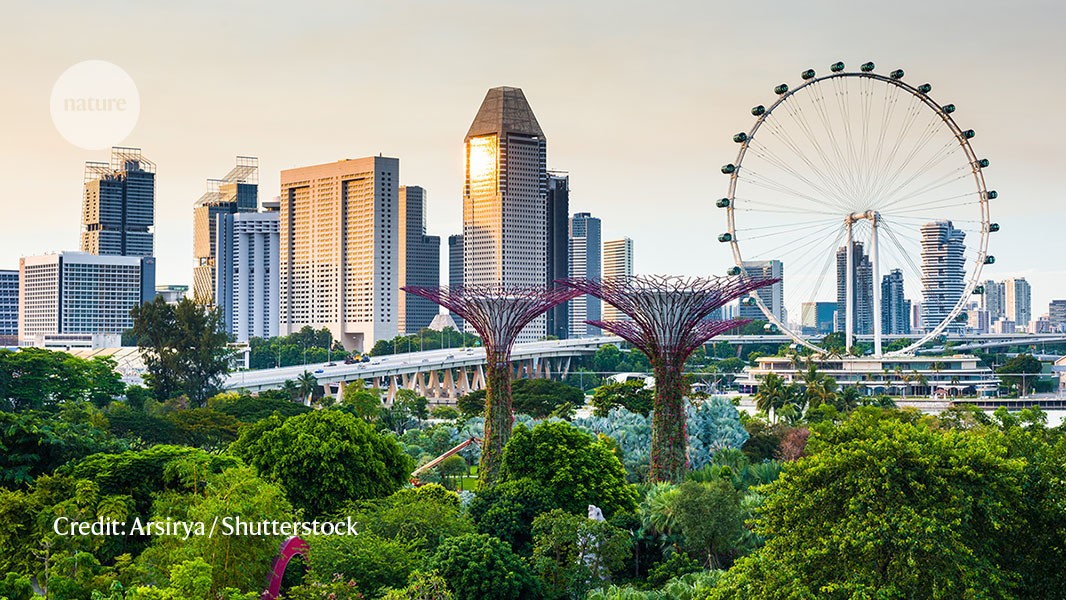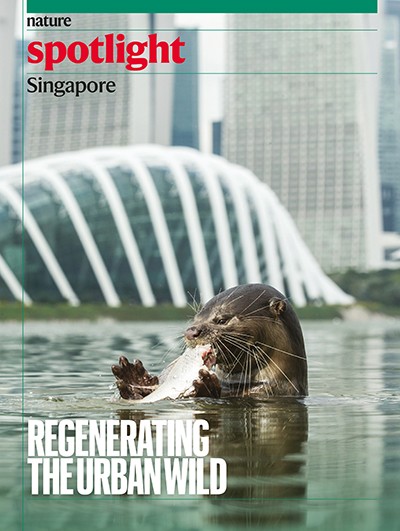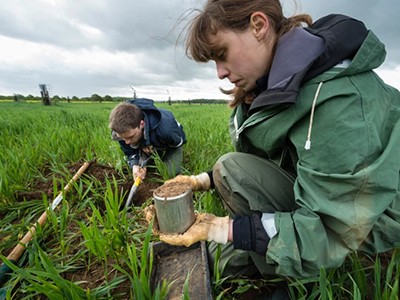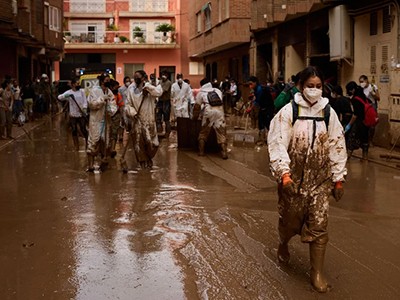The Singapore freshwater crab is, it’s fair to say, picky.
A diminutive, nocturnal creature, Johora singaporensis lives only along a handful of hill streams in small pockets of relatively unvisited rainforest in and around the nature reserves of Singapore.
Nature Spotlight: Singapore
The city-state covers just 730 square kilometres — 16% of which is rainforest — yet is home to almost 6 million people. That doesn’t leave a lot of room for crabs. Plus, “there are very few hills in Singapore”, says Darren Yeo, a freshwater ecologist at the National University of Singapore (NUS). Because of its stringent habitat requirements, says Yeo, “this crab was bound to be endangered at some point”. Even so, Yeo was surprised when, in 2008, an undergraduate student in his department returned empty handed from a survey of one of three known locations of the crab. “That started the ball rolling, when people started pressing panic buttons,” says Yeo.
Since Singapore was made a trading outpost by the British in 1819, scientists estimate1 that human activities, such as deforestation, have led to an extinction rate of 37%. Now, however, the country’s central government is working to protect and develop the natural world as part of its city-planning strategy, which it says will improve mental health, keep urban temperatures down and safeguard the country’s environmental legacy.
It was through this strategy that the Singapore freshwater crab found a reprieve. Shortly after the discovery that its numbers were dwindling, a sophisticated conservation strategy kicked into gear. The National Parks Board (NParks), Singapore’s nature authority, formed a working group with representatives from academia, government agencies, non-governmental organizations and international conservation specialists. Together, they developed a captive-breeding programme for the crabs and released some of them at suitable sites to boost wild populations. Today, J. singaporensis is still endangered, but not facing imminent extinction.
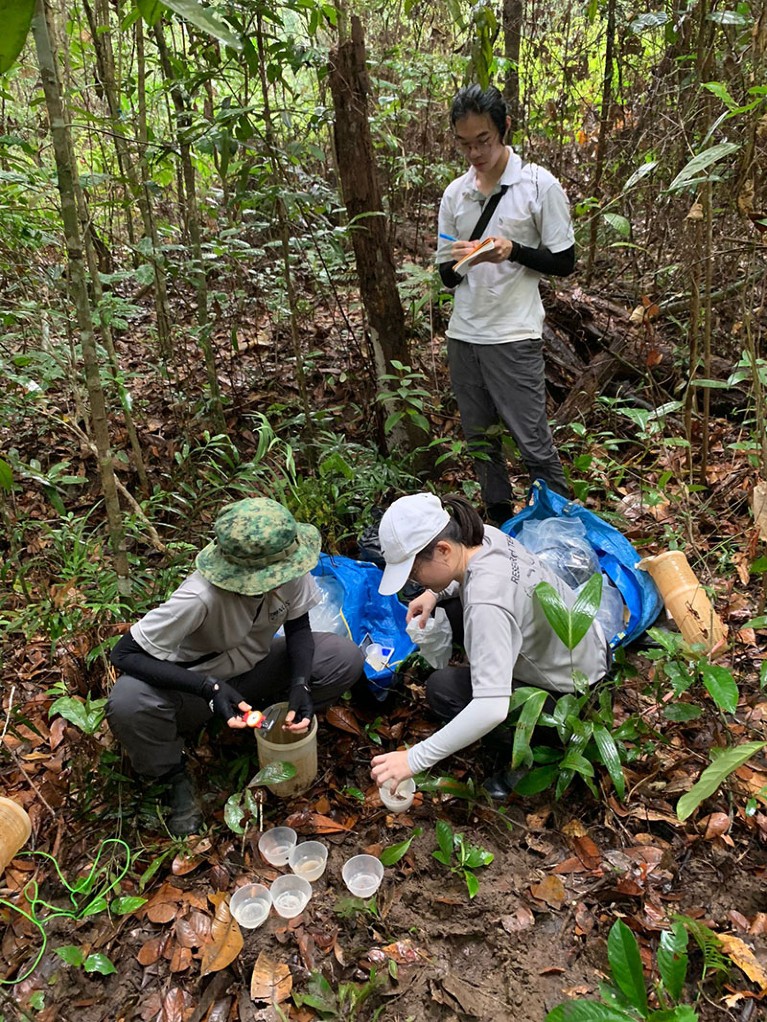
Fieldwork revealed that the number of freshwater crabs was dwindling in Singapore.Credit: E.X.P. Toh
Paving the way
Singapore’s population grew by 2% last year, and by 5% the year before that. Like many high-income nations, its birth rate is decreasing, but it is courting international workers to make up the deficit and keep economic targets at 5% growth in gross domestic product (GDP). Of its 6 million people, 1.9 million are classed as non-residents, including foreign workers and students. The country’s economy is shepherded by its central government, which employs more than 150,000 people and maintains a tight grip on the country’s institutions. The government, which has been in power since independence in 1959, is listed as a ‘flawed democracy’ in the Economist Intelligence Unit 2024 Democracy Index, ranking between Sri Lanka and Guyana. Its GDP per capita, meanwhile, ranks as the highest in Asia, and compares with that of Norway.
In May, the country went to the polls to re-elect the People’s Action Party, which found itself unopposed in 5 of the 97 seats being contested. Only 2.8 million people were eligible to vote in the election, and the People’s Action Party’s biggest rival, the Workers’ Party, contested only 26 seats. Voting is compulsory in Singapore, and, according to a 2024 report2 from the Reuters Institute for the Study of Journalism, the country’s media industry is straightjacketed by an “elaborate network of laws governing traditional and online media”. “The laws give the government the right to order the publication of ‘corrections’ to online content that it considers to be erroneous, or to prevent a ‘diminution of public confidence’ in the government,” the report says.
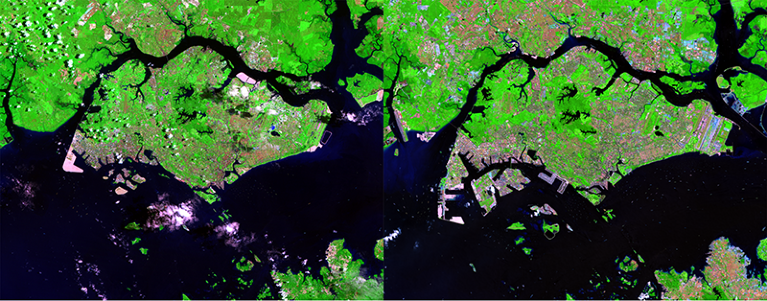
Singapore’s shoreline changed substantially between 1989 (left) and 2018 (right).Credit: Landsat/EROS/USGS
Since 1960, Singapore has reclaimed around 150 square kilometres of land from the sea. In part, this is to meet demand for homes: around 80% of Singaporeans live in government-provided housing, nicknamed HDBs, after the Housing and Development Board, and many of those are in high-density skyscrapers. Singapore is the third most densely populated territory in the world, after Macau and the city-state of Monaco. Alongside this, the country’s economic success is buttressed by being the world’s busiest port outside China, hosting more than 3.11 billion tonnes in traffic last year.
This urban development and economic success has come at a cost for the natural environment: where once there was jungle, there is now city. Singapore has lost almost all of its primary rainforest, except for a small tract of land in the Central Catchment Nature Reserve, which sits in the middle of the island and is part of one of the two main water catchment areas. Although some of the country’s remaining non-primary rainforests, including in the Central Catchment, are protected from development, their long-term fate is a concern for environmentalists.
In 2023, Desmond Lee, the country’s national development minister, said that nearly 100,000 homes were likely to be built by 2025. Woodland areas, including Pang Sua and Clementi Forest, are scheduled for development, although the government says that there is no immediate need for construction. “The land area we’re working with is so small, which means we have to be very smart about how we do it,” says Harvey Neo, who studies the urban environment from the leafy campus of the Singapore University of Technology and Design.
How farming could become the ultimate climate-change tool
In a bid to achieve its sustainability goals, the government has pledged to plant one million trees by 2030 and transplant 100,000 corals into its marine waters, which NParks said in 2024 would take at least 10 years to complete. Neither project is without controversy. “Nobody is tracking how many trees we are cutting down while we are planting a million trees,” says Andie Ang, a primatologist at Mandai Nature, a wildlife organization affiliated with Mandai Wildlife Reserve, and president of the environmental charity the Jane Goodall Institute Singapore. “How about those century-old trees that are being cut down for development?” One person told Nature, anonymously, that government representatives had initially suggested transplanting one million corals into local waters: a figure that the source said was unrealistic.
Another concern is the availability of information. Academics and civil-society groups say that they cannot access the same data that are available to government agencies. “There’s not always a one-to-one connectivity in terms of the data that civil society is privy to and the data that government and civil service is privy to, and very often that leads to miscommunication between these two parties,” says ecologist Sankar Ananthanarayanan at the NUS. Together with Ang, Ananthanarayanan co-authored the 2024 Singapore Terrestrial Conservation Plan, which outlines the views and concerns of the country’s environmental groups.
Civil servants dispute this characterization. “At least 80% of our work is collaborative, because we can’t do it on our own,” says Lim Liang Jim, who runs the conservation division of NParks. Some species data might be withheld from the public to protect against poaching, he adds.
One recommendation put forward by the Terrestrial Conservation Plan is to improve communication and consultation around plans to clear forests for development. However, some people remain sceptical. “In a place like Singapore, usually by the time you know that a patch of forest is going to be developed, they’re going to do it, no matter what,” says Kalai Vanan Balakrishnan, who is chief executive of the non-profit organization the Animal Concerns Research and Education Society (ACRES).
A city in nature
Singapore has a robust and detailed urban-planning system, however, and that means all proposed buildings are assessed for their environmental impact and contribution to the country’s green image. Government planning policies are stringent, and include a range of requirements, from mandatory environmental sustainability standards for all new buildings to improve energy performance and increase green construction practices to smaller obligations, such as incorporating planter boxes with vegetation on overhead pedestrian bridges.
The country is among the greenest cities in the world in terms of plant coverage. Treepedia, a remote-sensing urban tree-canopy monitoring project led by scientists at the Massachusetts Institute of Technology’s Media Lab in Cambridge, and the World Economic Forum in Cologny, Switzerland, found that Singapore had the second-best canopy cover of street trees, after Tampa, Florida.
The government has a long-stated ambition of keeping urban spaces full of plant life — a series of policies bundled into the plan to create a ‘city in nature’. There are a variety of reasons behind this, says Tan Puay Yok, who studies urban greening and ecology at the NUS. “By placing greenery closer to where people live and closer to buildings, the buildings are shaded from solar radiation,” he says. “Cooling of the environment is one big thing.”
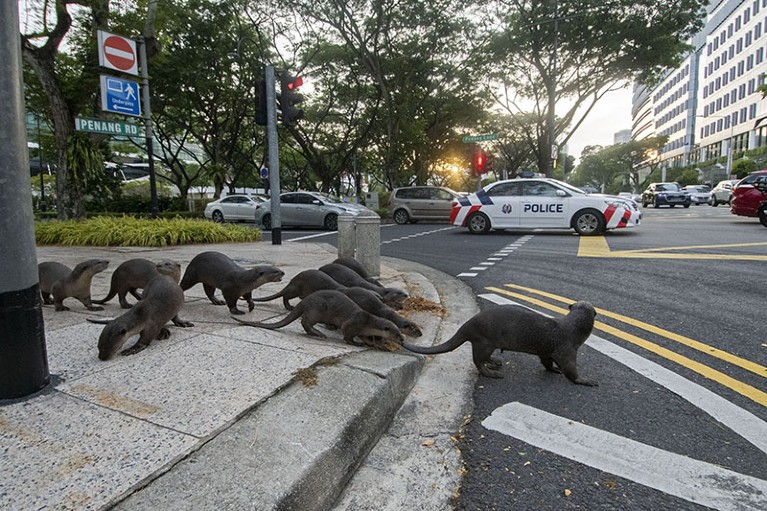
Otter populations returned to Singapore, thanks to sustainability measures.Credit: CHINE NOUVELLE/SIPA/Shutterstock
The approach is effective: the 62-hectare Bishan-Ang Mo Kio Park in the centre of the island can be up to 3 °C cooler than high-density residential blocks nearby. This is valuable in a country where summer temperatures can reach 36 °C. “It’s very easy to feel it as you walk round the city”, says Chua Siew Chin, who studies forest ecology at NUS. “Singapore has warmed up a lot over the years; greening can help with that.”
There are psychological benefits, too. “We know that even just looking at greenery makes people feel better,” says Yok. Vegetation also provides noise mitigation and soaks up water from rainfall, he adds. “This all ties back to having that scientific understanding of how greenery benefits urban dwellers living in a dense city like Singapore.”
Meet the researchers pioneering Spanish climate solutions


